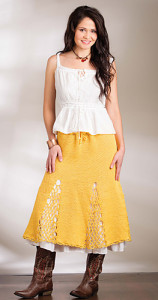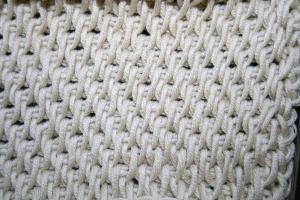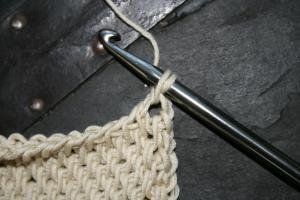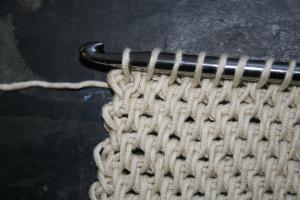 Tunisian stitches are unique in crochet as they are worked by “loading” your hook with live loops across the row then working a Return Pass to work all the loops back off. So every row has a two part process, load up the loops, and then work the loops back off. It is also unique as you do not turn your work, but work back and forth on the same side. Tunisian Simple Stitch is a classic stitch in Tunisian crochet, it was one called the “afghan stitch” and creates a vertical line where the stitches stack up upon one another.
Tunisian stitches are unique in crochet as they are worked by “loading” your hook with live loops across the row then working a Return Pass to work all the loops back off. So every row has a two part process, load up the loops, and then work the loops back off. It is also unique as you do not turn your work, but work back and forth on the same side. Tunisian Simple Stitch is a classic stitch in Tunisian crochet, it was one called the “afghan stitch” and creates a vertical line where the stitches stack up upon one another.
Before beginning Tunisian crochet, you need to select the correct size hook, this technique can create a dense fabric if the hook size is too small. My standard rule of thumb is that whatever stand size crochet hook I would use with the chosen yarn, I go up at least 2 sizes in Tunisian. Meaning if with standard crochet I would use a size H/8/5.00mm with a yarn I would choose a Tunisian hook of K/10 ½/6.5mm to get the same drape and feel of the fabric.
To work this stitch, you begin with a chain, insert your hook into the second chain from the hook and pull through a loop, insert your hook into the next chain and pull through a loop, continue this insert hook and pull up a loop until you have worked all the chains have been worked. You will have the same number of loops on the hook as the number of chains you began with. Now you work a Return Pass.
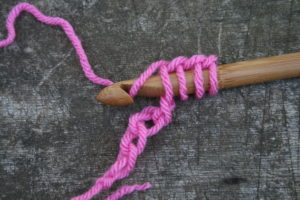
Insert hook into chain stitch, yarn over, pull through a loop. Repeat this process in all chain stitches across.
The Return Pass is always the same regardless of the Tunisian stitch, unless otherwise stated. You begin with working a chain 1 with the first loop on the hook, then yarn over and pull through 2 loops, yarn over and pull through 2 loops across the loops until 1 loop remains. Now you are ready to begin the next row.
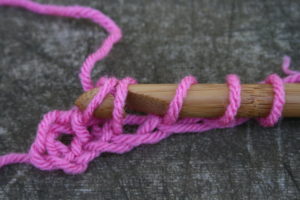
Return Pass….Chain 1 (with the first loop only, this creates the last stitch), yarn over and pull through 2 loops, repeat the yarn over, pull through 2 loops until 1 loop remains on the hook.
As with most things with crochet the Tunisian Simple Stitch (Tss) is where you place the hook. You do not work in the stitch directly below the loop on your hook, unless otherwise stated as this will cause an increase in the work, working from right to left you insert your hook under the vertical bar of the next stitch, yarn over and pull through a loop, continue inserting your hook under the vertical bar and pull through a loop until you reach the end of the row. Insert your hook into the chain 1 created in the beginning of the Return Pass, this is a little more difficult to work into, and is the last stitch of the row. Now you work the return pass again.
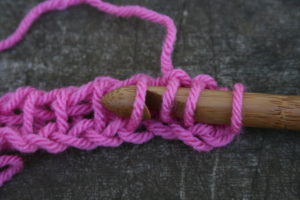
Insert hook under vertical bar from right to left (reversed if you are left handed), yarn over, pull up a loop, repeat to “load” the hook.
Continue this process, as you are now creating the Tunisian Simple Stitch.


